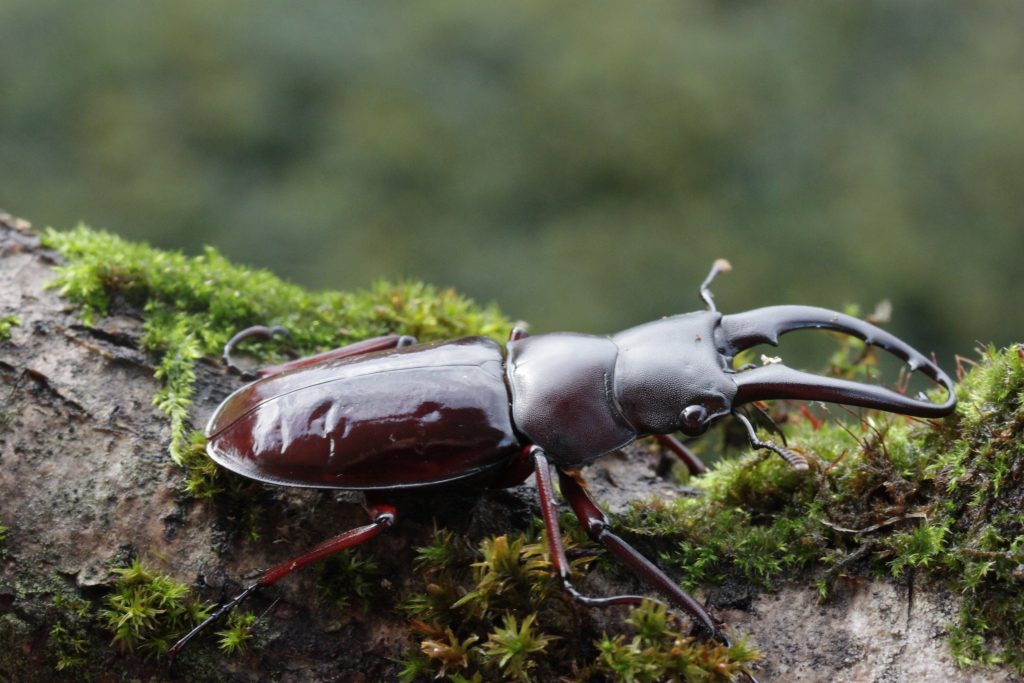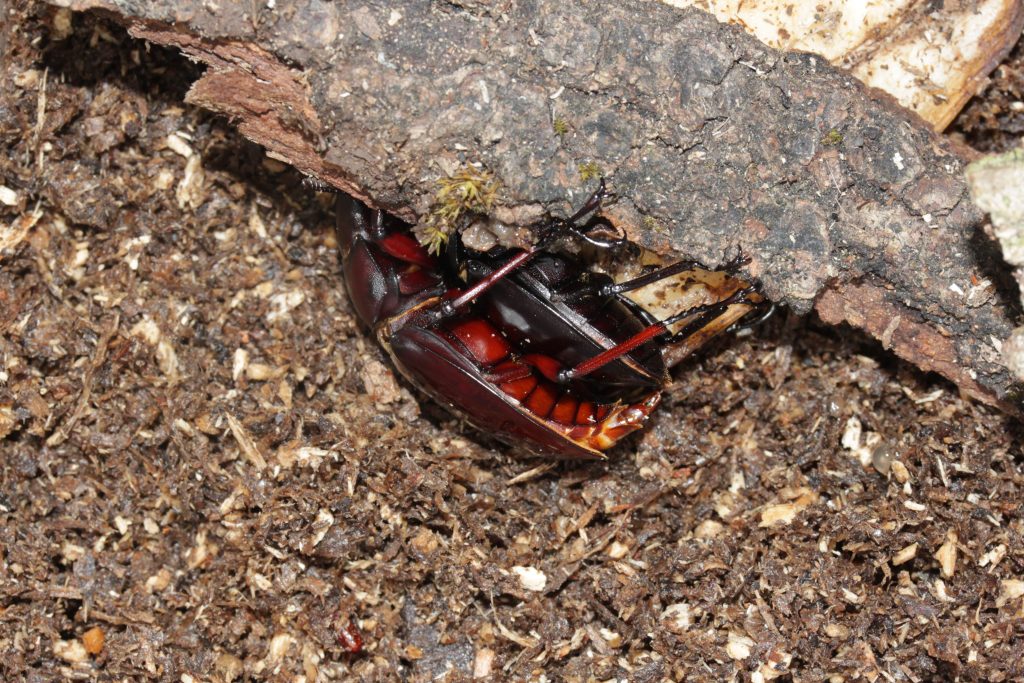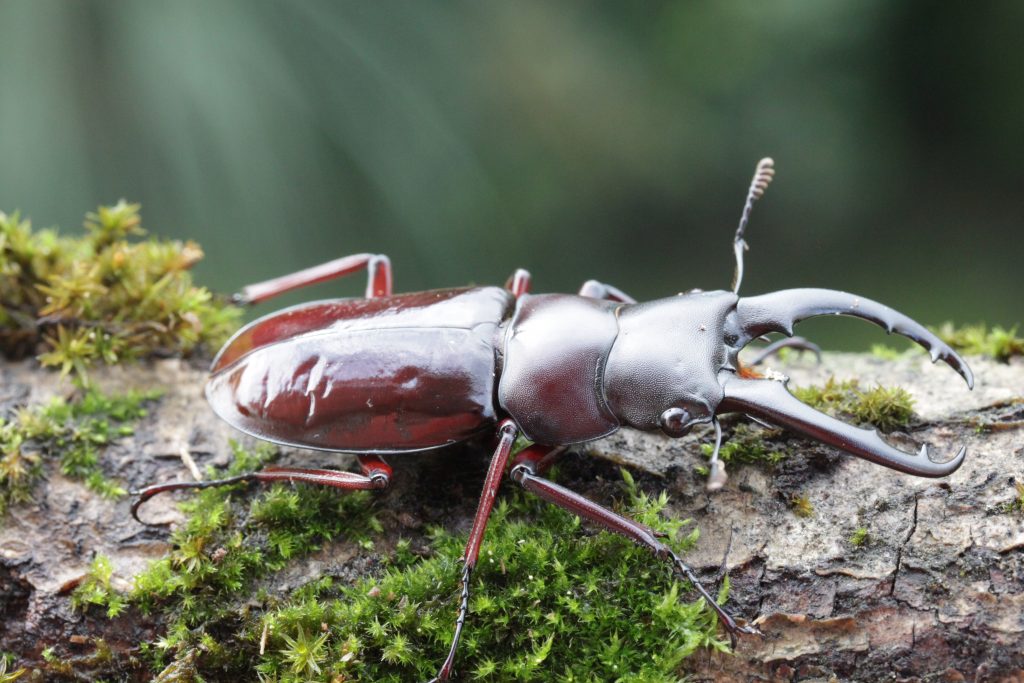I have managed something that I had hoped to do for a long time. The breeding of the elusive Hexarthrius bowringi. The first time I have seen this species was in 2003 when I exchanged half my insect collection for a good-sized specimen of the nominate species. Ever since then I have been dreaming about rearing them.
Many things happened in the meantime, I moved countries, I reared different species, etc. Then many new beetles were described from Arunachal Pradesh in India and there it was again: Hexarthrius bowringi, and a new subspecies as well Hexarthrius bowringi baminorum. I even wanted those more, but the prices for reared specimen were insanely high.
Both species are kept and bred in Japan, with H. bowringi baminorum seeming the more common now. The differences between the two subspecies are subtle. H. bowringi baminorum tend to be a bit larger, much more reddish and the mandibles are more elongate. The nominate species is more dark, and much more bulky. Both are beautiful, and if you know anyone who wants to give me some larvae or beetles of the nominate species, please let me know 🙂
Luckily, some Japanese breeders managed to rear them, and prices came down, albeit only a little bit. They are still an expensive and rare species. Last September, I managed to get a small pair of H. bowringi baminorum. They were on the way for a long time, and I was afraid they would not reach alive. Finally, they made it, and were still alive. I set them up immediately for breeding, and placed them in a 22 liter container, filled with flake soil and white rotten wood pieces. I used beech wood that was infested with Trametes versicolor, and then lots of pieces of oak branches. These I often utilize for my tough cases, these are branches that have been rotted by a dry white rot, while they are still on the oak tree. I normally find these after storms, mainly in autumn. I cherish these as my special solution for otherwise supposedly hard to breed species.
Since Hexarthrius bowringi do seem to prefer cooler temperatures, they were set up in the basement, where temperatures normally fluctuated between 16 and 20 degree Celsius. The female did not live very long, after two weeks she had died already. I waited a few weeks more, and the checked for larvae. All larvae were found in the wood pieces, which the female had chewed on. Chew marks are often a good sign that eggs are being laid, however in her case I was not sure, because the chew marks were very small and just created a tiny opening in the wood piece, unlike for instance the typical bite marks of Prosopocoilus which are much larger. I was however positively impressed and managed to get 8 larvae in total, some more seemed to be in a harder piece of beech, but when I tried opening it, I actually killed 2 more larvae and decided to leave the piece alone in Flake Soil and check back after a few months, when it had become softer. When I did that I managed to get 2 more healthy larvae. I placed the total of ten larvae in 800ml containers, filled half with the white rotten wood the larvae had been found in and topped off with flake soil. I sometimes do this when I am unsure if flake soil will be accepted. I then kept the larvae in cool temperature and in March did one change of substrate and provided them with more flake soil. They started pupating in June, with the first female hatching in July and the second in August. Now talking about stupid mistakes. I overestimated the time period they would stay inactive, and was very surprised to see that they became active within 3 weeks from eclosing. One female chewed out her way from her container and ran away, the other one fell on her back and died. I was devastated, such a blunder with such a rare species.
But luck was on my side, and by August everyone else had pupated, and in a perfect ratio: 4,4. 2,2 hatched in August, and I set them up as soon as they started to feed. Mating was instant and 24-7. I left the male with the females, as there were no signs of aggression. I noticed that or a few days both were feeding a lot and mating also during the day, while now they are more likely to be hidden during the day, while females spend more time underground chewing wood to lay eggs. I am now hoping for many eggs and larvae. I will set some larvae of the next generation on kinshi, and the other into 1 liter containers with flake soil, as I believe that this is beneficial for their growth and size increase.
It looks like this generation did give me some eggs and larvae. I have these larvae in small boxes half filled with kinshi, half with black soil. They have all moved into the kinshi portion and I think that is a good sign. At the moment, I have just checked one of 3 breeding boxes, and already collected some 15 larvae or so. Might seem low to Japanese and Taiwanese breeders, but getting the right wood for egg laying here is really difficult still.
The main key to success with Hexarthrius bowringi is to get the right type of wood, which is not so easy, and the right temperatures. I think an indication when it is too warm is that the beetles become very active and run around more than others. This behavior is not displayed when it is cooler. I have kept mine always below 20 degree Celsius, with temperatures going down to 8 degree Celsius (not on purpose, temperatures in the basement dropped due to an open window. That said, they are also very active at cool temperatures, which is quite interesting. Quite the nervous species.
I hope this species can be established in breeding outside Japan. I have shared a pair of the last generation, and hope I will be able to share some larvae with other breeders around here.




Leave a Reply